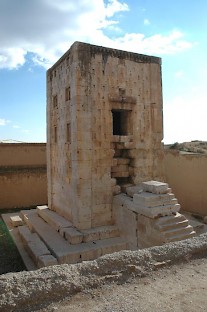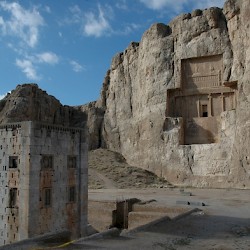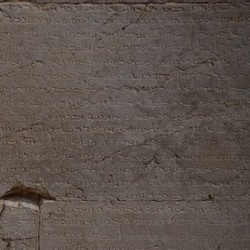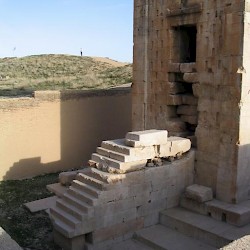Naqš-e Rustam, Ka'bah-e Zardusht
Q2363092Naqš-e Rustam: archaeological site in Fars (Iran), best known for its Achaemenid tombs and rock reliefs made in the Sasanian age.
The Ka'bah-e Zardusht

In front of Achaemenid Tomb I is a square tower of 12½ meter high, which is known as the Ka'bah-e Zardusht ("Zarathustra's ka'bah" - the real ka'bah is, of course, the famous square monument in Mecca). It is often said that this tower was used to keep the holy fire of the Zoroastrians, but the absence of a chimney does not really support this interpretation.
An alternative hypothesis is that this building served as a storage for books (e.g., the Avesta), but most scholars think that in the Achaemenid age, the sacred texts were still learned by heart, which implies that there was no need for libraries. A third, more recent theory is that the Ka'bah-e Zardusht played a role in the cult for dead kings.
The problem is made more complex by the fact that an almost identical monument, called the Zendan, can be seen in Pasargadae. It is badly damaged, but still sufficiently preserved to establish that it had the same dimensions as the square tower in N. A good explanation of the function of theKa'bah-i Zardusht must take the function of the Zendan in account as well.
Whatever the function of the two buildings, it is certain that the Ka'bah-i Zardusht remained important for many centuries. The Sasanian king Shapur I (r.241-272) left two inscriptions on the lower walls of the building, in which he explained his policy. His high priest Kartir also left an inscription, in which he commented upon the first two texts and described the king's victories. In this age, the Ka'bah-i Zardusht appears to have served as a storage of military standards.



